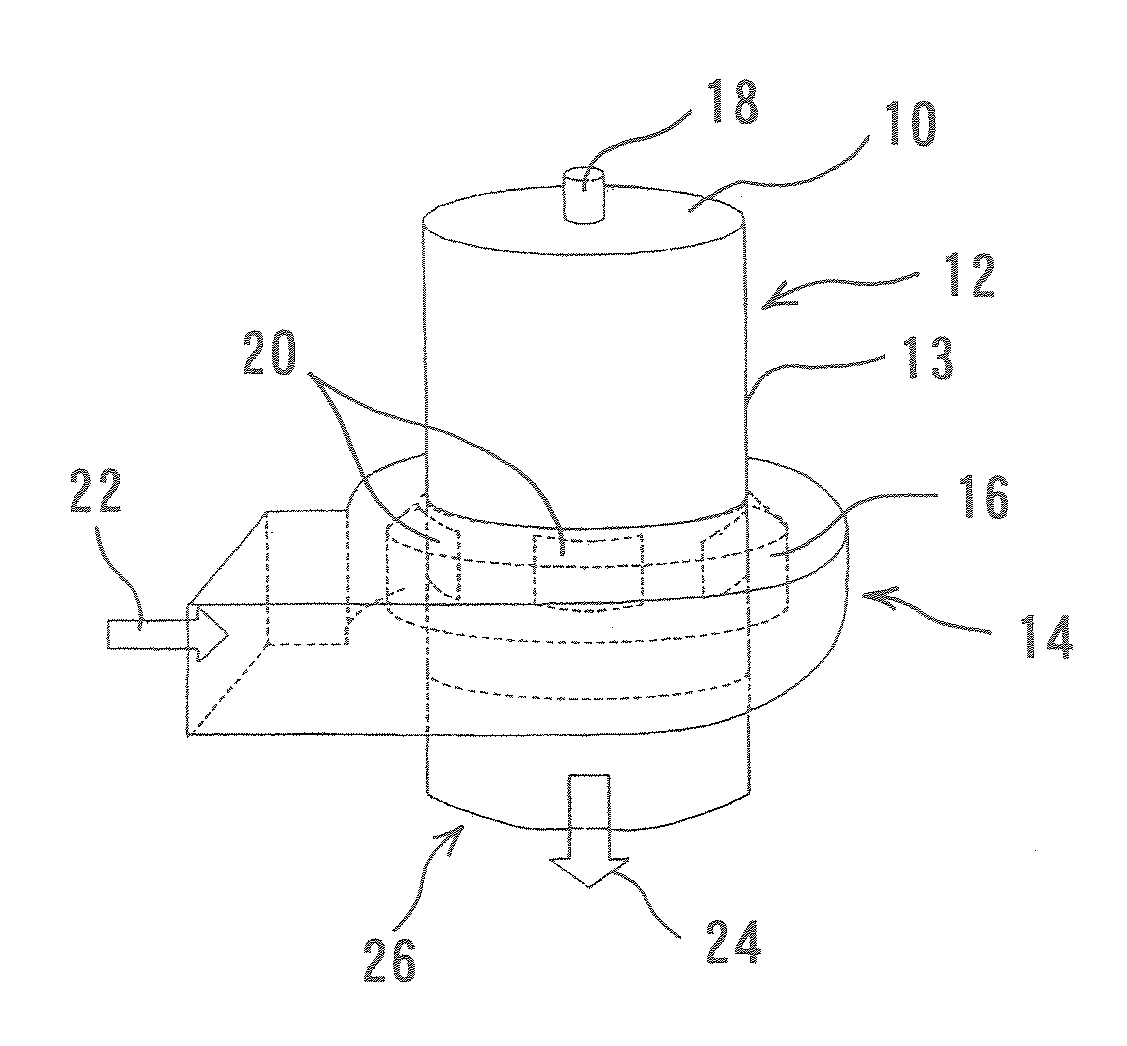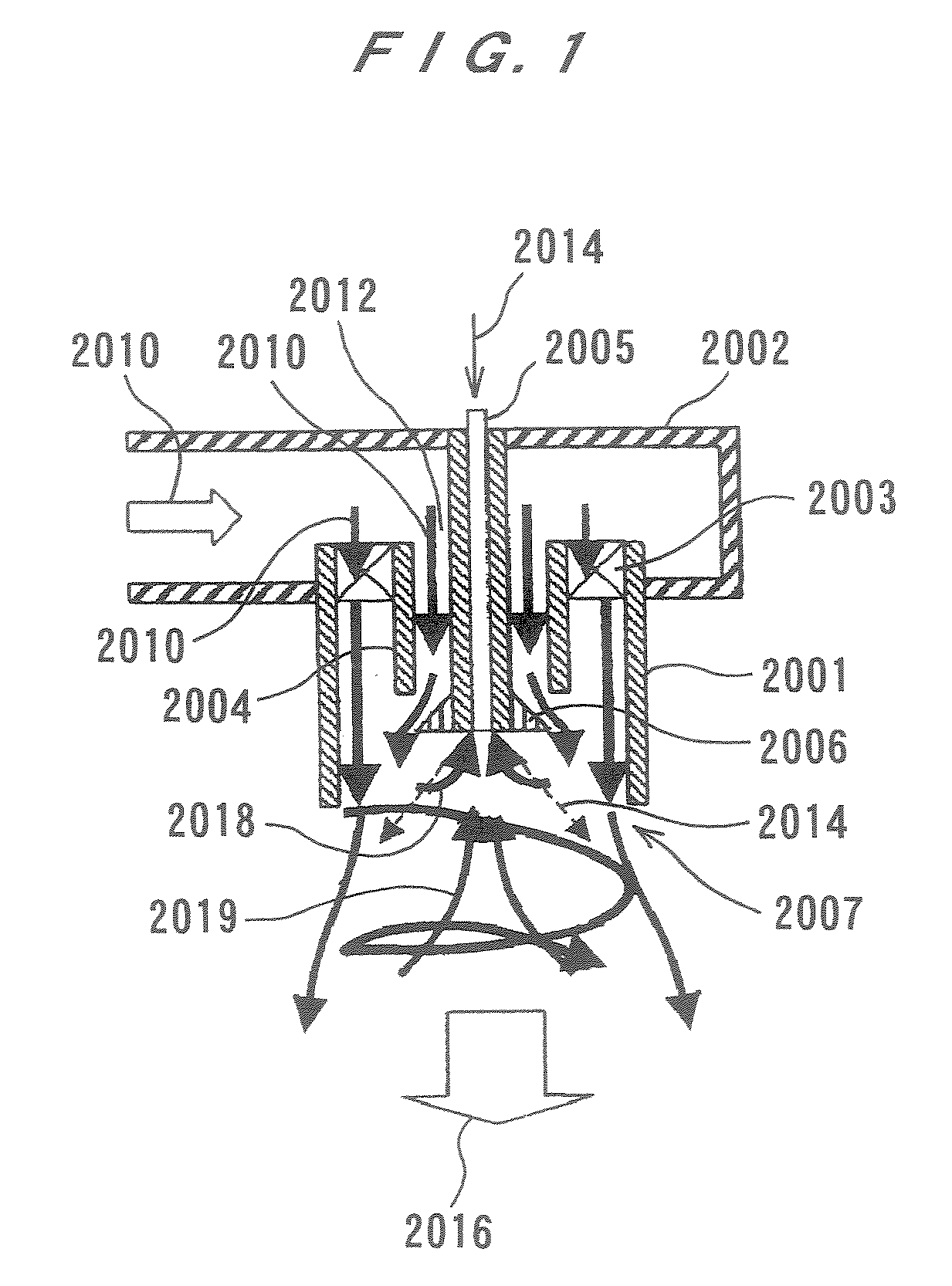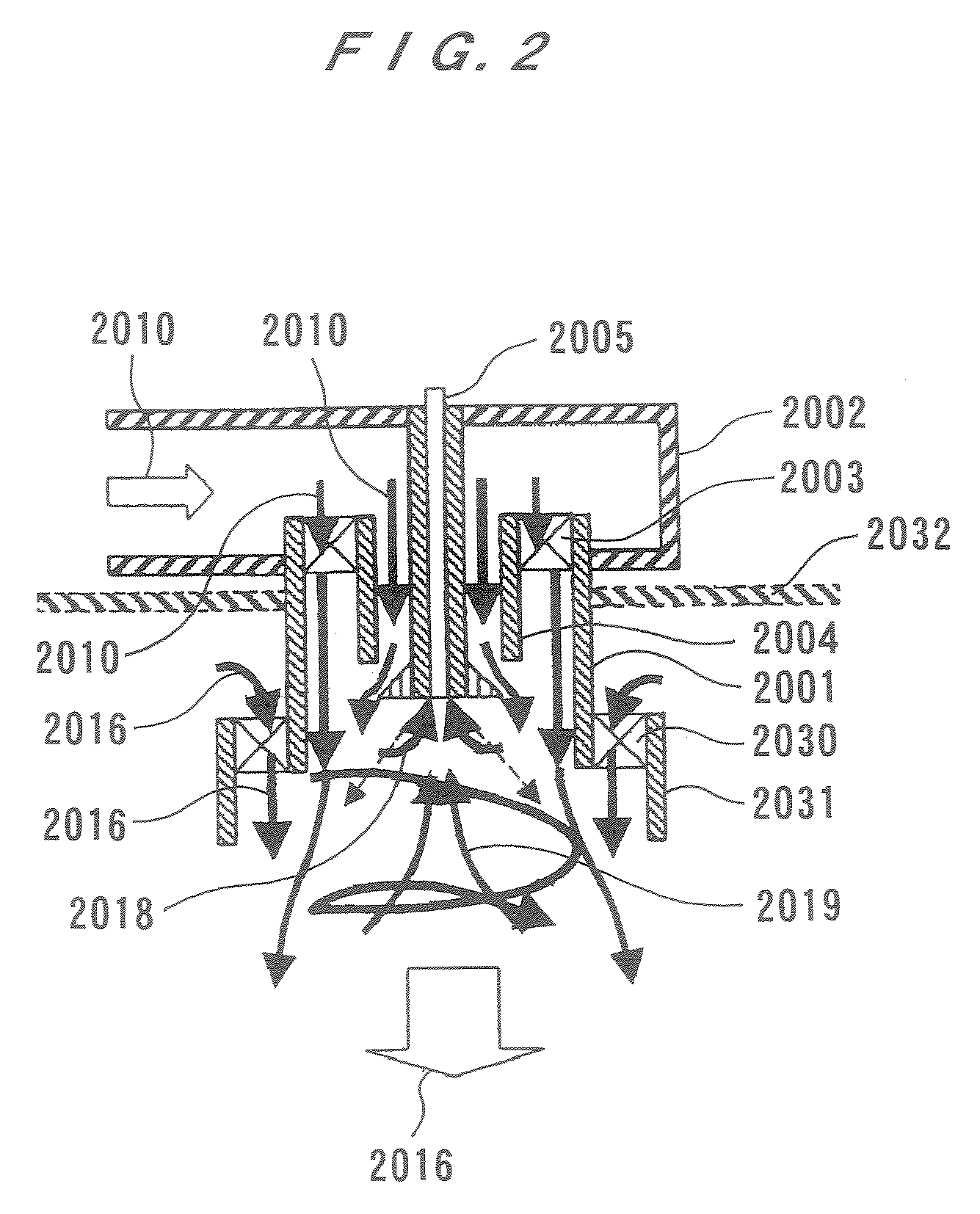Combustion Apparatus and Combustion Method
a combustion apparatus and combustion method technology, applied in the direction of combustion types, lighting and heating apparatus, machines/engines, etc., can solve the problems of inability to premix liquid fuel, the most difficult to reduce thermal nox, and the most likely to occur backfire or blow-off, etc., to maximize the effect of burnt gas recirculation, suppress thermal nox generation, and enhance stability
- Summary
- Abstract
- Description
- Claims
- Application Information
AI Technical Summary
Benefits of technology
Problems solved by technology
Method used
Image
Examples
first embodiment
[0104] First, a combustion apparatus will be described with reference to FIGS. 4 and 5. The combustion apparatus shown in FIGS. 4 and 5 can be applied to general use mainly in boilers and industrial furnaces, and also in gas turbines. The combustion apparatus has an cylindrical container (hereinafter, simply referred to as a container) 12 with one end (close end) 10 which is closed, an inflow casing 14, a swirler 16, and a fuel nozzle 18 provided so as to extend through the upper end (close end) 10 of the container 12. A plurality of air inflow portions 20 are formed at common pitches on a side surface 13 of the container 12. Combustion air 22 flows through the air inflow portions 20 into the interior of the container 12, and inflow passages are formed by the air inflow portions 20, the inflow casing 14, and the swirler 16. The swirler 16, details of which will be described later, is formed so as to surround a perimeter of the side surface 13 of the container 12 including the air i...
second embodiment
[0111] In the combustion apparatus thus constructed combustion air 22 flowing through an inflow casing 14 flows into a swirler 16 and through the air inflow portions 20 into the container 112 upward in FIG. 7. By the swirler, details of which will be described later, the air 22 flowing into the container 112 forms a swirling flow 28 having a larger velocity component in a direction opposite to an outlet 26. Specifically, the air 22 forms a flow 28 having a velocity component in a direction of a central axis J of the cylindrical container 112 from the open end 26 to a close end 110 and a velocity component to swirl in a circumferential direction. Fuel is injected toward the air inflow portions (inflow passages) 20 with a velocity component in the direction of the central axis J from the close end 10 to the open end 26 and a velocity component directed radially outward.
[0112] The swirler 16 and the inflow casing 14 are substantially the same as those in a third embodiment described l...
third embodiment
[0117] In the example of the third embodiment shown in FIGS. 8 and 9, the swirler 16 will be described in detail with reference to FIGS. 10 to 12. As shown in FIG. 10, the swirler 16 is generally configured such that swirl vanes 54 for defecting a flow are disposed between the inner cylinder 50 and the outer cylinder 52 to form air introduction passages 56. Further, as shown in another example of FIG, 11, the swirler 16 may have a plurality of air introduction passages 56a opened in an annular member 58 for deflecting a flow. In this case, the shape, the opening area, and the number of the air introduction passages 56a may be set arbitrarily. Alternatively, as shown in still another example of FIG. 12 which achieves the same effects as the above swirler 16, air introduction passages 56b divided for each air inflow portion 20 in the connecting member 270 may be attached to the connecting member 270.
[0118] Further, in a structure shown in FIGS. 10 and 11, the swirler 16 may also serve...
PUM
 Login to View More
Login to View More Abstract
Description
Claims
Application Information
 Login to View More
Login to View More - R&D
- Intellectual Property
- Life Sciences
- Materials
- Tech Scout
- Unparalleled Data Quality
- Higher Quality Content
- 60% Fewer Hallucinations
Browse by: Latest US Patents, China's latest patents, Technical Efficacy Thesaurus, Application Domain, Technology Topic, Popular Technical Reports.
© 2025 PatSnap. All rights reserved.Legal|Privacy policy|Modern Slavery Act Transparency Statement|Sitemap|About US| Contact US: help@patsnap.com



